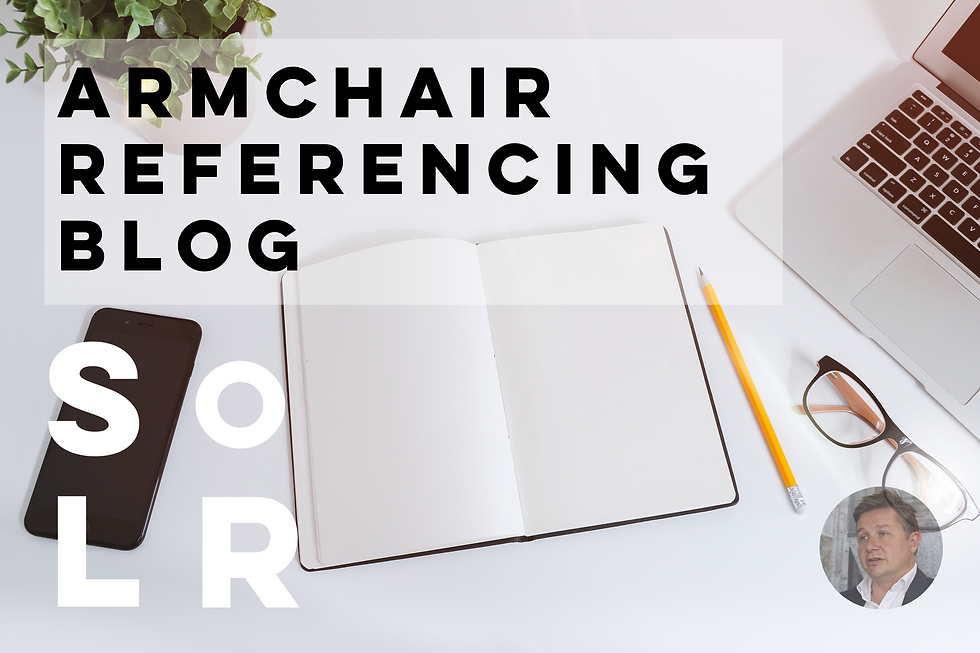Armchair land referencing #4
- Ashley Parry Jones

- Nov 25, 2022
- 3 min read

Last time I asked you to consider who owns the street outside your house. The answers is ‘it depends’ and from this infuriating answer is derived a great deal of the more complicated work land referencers are faced with. Most importantly it should not be assumed that the street belongs to the local highway authority - they are likely to only have a right to maintain the road, which in theory means that they ‘own’ the top two ‘spits’ of the road (a ‘spit’ being the length of a shovel face) – i.e. they notionally ‘own’ the material (aggregate and tarmac) used to surface the road, but they do not necessarily own the air above (to the heavens) or the subsoil below (to the centre of the Earth). These notionally remain part of the property belonging to the owners of the property that front onto the road – the ‘frontagers’. So if you own the house then it is you who own up to the half width of the road outside. This legal assumption is known as ‘ad medium filum’. It does not provide the owner with a particularly useful or valuable asset as these rights do not permit the owner to use the road as though it was their own private property (the public still have a right to pass along public roads) and they can’t stop utility companies from having sewers, pipes and cables buried in the street. However historically it might sometimes mean that their cellar extends under the road or that their property can overhang the public road below. However it does mean that when these roads are included in planning applications the ‘frontager’ interests must be identified, consulted and notified. This all comes about because public roads in the UK are ‘adopted’ which means that a right of passage has been established and formalized by being surfaced without the land on which the right passes actually being acquired. This is a remnant from the laws introduced at the Norman conquest (1066 and all that) that continues to underpin property, rights of way and other laws in the UK today. However there are exceptions: in more recent times roads may have been built by developers as part of an overall scheme and then handed to the local authority or the new owners of the properties the road serves, or the road may have been build using compulsory powers that purchased the land outright; or more historically, roads may have become ‘Charter Streets’ and passed into the notional ownership of the Crown, sometimes to pay for their maintenance and to prevent houses from getting too close to each other, as had been the case – with disastrous consequences – prior to the Great Fire of London in 1666. As will be noted in future ‘Armchair land referencing’ articles, rights of way are really complicated.
This edition’s question is why does much of the UK’s countryside have its timeless ‘patchwork quilt’ characteristic look and how is this reflected in land ownership?
This article is written by Ashley Parry Jones, Director – Planning, WSP. The opinions expressed are those of the author and do not purport to reflect the opinions or views of WSP or SoLR or its members. The information provided does not and is not intended to constitute legal advice and instead is offered for general purposes only. It does not constitute the most up to date legal information. Any links and references provided are for the readers’ convenience only and do not constitute a recommendation of those sources.




Ashley, I love these posts - please don't stop! As Lecturer in Land Referencing at the National College for Advanced Transport Infrastructure (NCATI), I find these posts invaluable in proving how invaluable land referencing skills are!
And as a learning professional who loves to learn, I always find myself learning more about this niche subject. Thank you!